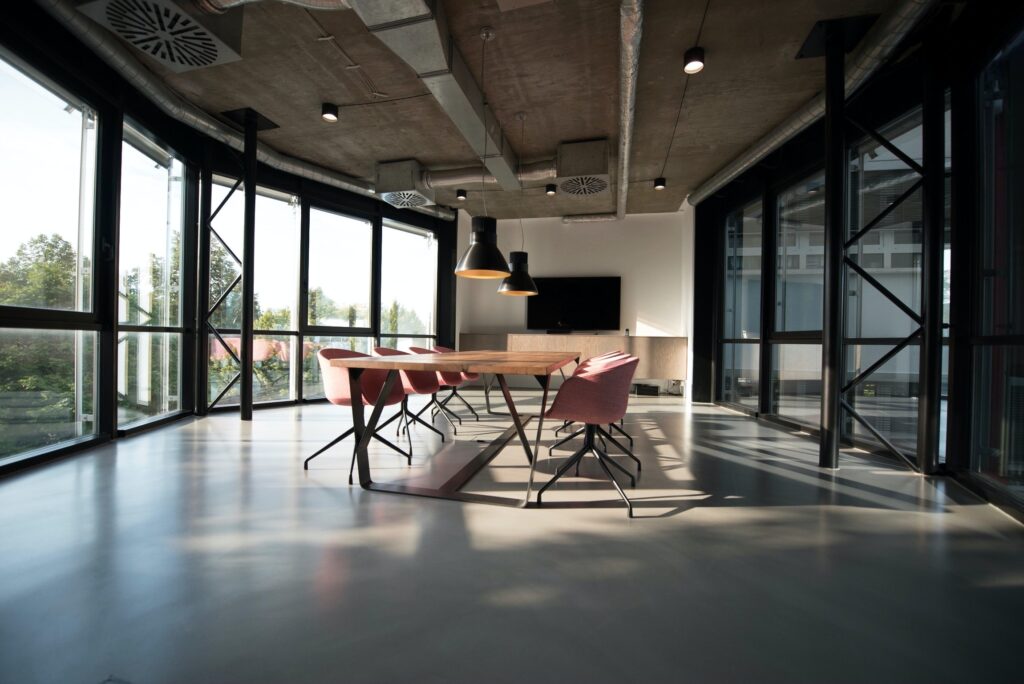
How To Improve Office Comfort By Reducing Humidity Levels

As the summer season brings higher humidity levels, both outdoors and indoors, maintaining a comfortable environment in your office becomes crucial.
Elevated humidity can lead to various discomforts and health issues for employees.
This article provides insights into the impacts of humidity and offers practical solutions to lower humidity levels in your office, enhancing employee well-being and minimizing moisture-related problems.
Understanding Humidity
In essence, humidity refers to the amount of moisture present in the air.
The air’s capacity to hold moisture, or water vapor, depends on environmental conditions, with warmer air having a higher moisture-holding capacity.
Relative humidity measures the air’s moisture content relative to its saturation point. Maintaining indoor relative humidity between 30% and 50% generally ensures optimal comfort levels.
Effects Of High Humidity
Elevated humidity can have several adverse effects on office comfort. Just imagine being an employee who has to experience the following:
Impaired cooling: Our bodies rely on perspiration to cool down.
As sweat evaporates from the skin, it dissipates heat, leading to a cooling effect. Lower humidity enhances this cooling process since humid air struggles to absorb additional moisture.
Reduced energy and alertness: High humidity levels can leave employees feeling sluggish and fatigued. In extreme cases, it can induce feelings of illness and excessive sweating.
Environmental concerns: Excessive humidity fosters mold and mildew growth, posing health risks to employees. Additionally, it creates an ideal habitat for insects and vermin, affecting overall hygiene.
Effective Strategies To Lower Office Humidity
Similar approaches used to reduce humidity in homes or commercial spaces can be successfully applied within office settings. Consider the following techniques:
Maintain HVAC systems: Air conditioning not only provides cooling but also reduces humidity by extracting moisture from indoor air. Regular professional maintenance ensures your HVAC system efficiently removes moisture and maintains optimal functionality.
Address spills and leaks: Spills and leaks contribute to indoor humidity levels and can lead to mold growth. Promptly clean up spills and ensure damp objects or carpets are dried or removed. If plumbing leaks are suspected, enlist a professional plumber to inspect and repair the plumbing system.
Utilize room dehumidifiers: Room dehumidifiers are designed to extract moisture from the air. Place these devices in areas with high humidity. Regularly monitor and maintain them to prevent mold growth. Empty the water collection container as needed to ensure consistent operation.
Install whole-structure dehumidifiers: For larger office spaces, whole-structure dehumidifiers can be installed to regulate humidity throughout the entire area. These systems are typically positioned near HVAC equipment, redirecting airflow from the air conditioner to the dehumidifier. Inside the device, moisture is removed before the treated air is returned to the office environment through the HVAC system.

Top FAQs: How To Lower Humidity Levels In A Building
- Why is it important to lower humidity levels in a building? Answer: High humidity can lead to discomfort, mold growth, and other moisture-related issues. It can also impact indoor air quality and promote the growth of allergens and pests.
- What are the ideal humidity levels for indoor spaces? Answer: The recommended indoor humidity levels typically range between 30% to 50%. This range helps maintain a comfortable and healthy environment.
- How can I measure indoor humidity levels? Answer: You can use a hygrometer, a device specifically designed to measure humidity levels. Many modern thermostats also include built-in humidity sensors.
- What are some signs of high humidity in a building? Answer: Condensation on windows, a musty odor, frequent mold growth, and discomfort are common signs of high indoor humidity.
- What are the sources of indoor humidity? Answer: Activities such as cooking, bathing, and using certain appliances can contribute to indoor humidity. Additionally, leaks and poor ventilation can lead to elevated humidity levels.
- How can I improve ventilation to lower humidity? Answer: Proper ventilation is crucial. Use exhaust fans in bathrooms and kitchens, open windows when weather permits, and consider using mechanical ventilation systems like air exchangers.
- Can weather conditions affect indoor humidity levels? Answer: Yes, outdoor weather can impact indoor humidity levels. During humid weather, moisture can enter the building, and during cold weather, poor ventilation can lead to moisture buildup.
- What role does air conditioning play in humidity control? Answer: Air conditioning not only cools the air but also removes moisture. Running the AC helps reduce humidity levels, especially in warmer months.
- Are there specific humidity-reducing appliances available? Answer: Yes, dehumidifiers are designed to remove excess moisture from the air. They can be used in specific rooms or for whole-building applications.
- How can I address humidity issues in basements or crawl spaces? Answer: Ensure proper drainage to prevent water from entering these areas. Consider using a dehumidifier specifically designed for basements and crawl spaces.
- Can sealing windows and doors help lower humidity? Answer: While sealing windows and doors can prevent outdoor air from entering, it’s essential to balance it with proper ventilation to avoid trapping moisture indoors.
- How does using exhaust fans help in humidity control? Answer: Exhaust fans remove humid air from areas prone to moisture, such as bathrooms and kitchens. They help expel excess moisture outdoors, reducing indoor humidity.
- Is it effective to use houseplants to reduce humidity? Answer: While houseplants can absorb some moisture, they may not significantly impact humidity levels in larger indoor spaces. Other strategies like proper ventilation and dehumidifiers are more effective.
- Can using moisture-absorbing materials help lower humidity? Answer: Yes, materials like silica gel or moisture-absorbing packs can help reduce humidity in enclosed spaces like closets or storage areas.
- How can I prevent humidity-related mold growth? Answer: Regularly clean and inspect areas prone to mold growth, such as bathrooms and basements. Maintain proper ventilation, fix leaks promptly, and use dehumidifiers if necessary.
These FAQs and answers provide a comprehensive understanding of the various aspects related to lowering humidity levels in a building and creating a more comfortable and healthy indoor environment.
By effectively managing humidity levels in your office, you can significantly enhance employee comfort, create a healthier workspace, and mitigate potential moisture-related challenges.
If you have any questions about our article “How To Improve Office Comfort By Reducing Humidity Levels” or need a dehumidifier feel free to contact us on LiveChat, social media, or at 416-912-2205.
